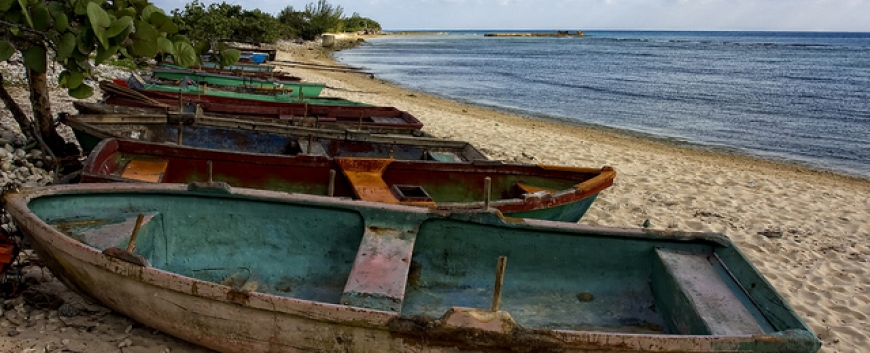Live from Cuba: The Unexpected Charm of Playa Girón
Manhattan/New York City; The Big Island/Hawai’i; Holland/The Netherlands: some of the world’s most captivating destinations go by two names. And so it is with Playa Girón, more famously known as the Bay of Pigs. In Cuba, it’s rare to hear someone refer to the deep, thumb-shaped bay on the island’s southern coast as the Bahia de Cochinos (Bay of Pigs) – and usually only by way of clarification when talking to North Americans. Geographically-speaking, the bay encompasses Playas Girón and Larga and is surrounded by the ecological marvel and UNESCO Biosphere Reserve Ciénega de Zapata.

The archetypical white sand beach and the abundant flora and fauna in the area have long attracted many, but for Cubans (and many Latin Americans for that matter), Playa Girón symbolizes a unique, historic event: it’s where a US attack was defeated for the first time in the hemisphere. As you approach the bay some 95 miles southeast of Havana, you’ll see giant billboards commemorating the victory of Playa Girón .

And it’s on this 3-hour drive where the unexpected charm of the area begins to reveal itself. The first leg of the journey to Jagüey Grande is kind of monotonous, it’s true, with long, unvarying stretches of farmland – some fallow, some in production thanks to ongoing economic stimulation mechanisms and related agricultural reforms. But keen observers will notice what may be one of the world’s longest hand-built highway walls constructed of locally-sourced stones – sounds banal, but it’s actually quite impressive (look for it on the northbound side of the highway beginning about 70 miles from Havana).
At this point in the journey, you’ll pass through Cuba’s largest citrus growing region, where much of the country’s oranges and grapefruit are grown, and some lemons too. Those Tropical Island juice boxes you’ve drinking in your travels? They come from this area as well and you’ll see the factory off the highway.

At Jagüey Grande the road turns south with a dramatic, enchanting change of landscape. Welcome to the Península de Zapata, a sprawling 2800-mile wetland expanse hosting hundreds of species of birds, fish, mammals, reptiles, and bugs (including heinous mosquitoes; you’ve been forewarned!). This is one of Cuba’s most diverse ecosystems, famous for its birding (flocks of endemic and migratory birds – the latter from April to November – can be seen) and superlative fly-fishing. This greener, shadier, damper side of Matanzas province takes a turn for the quirky at Boca de Guamá, home to Cuba’s only crocodile farm and Villa Guamá, a re-creation of an indigenous Taíno village replete with workers in period costume – think Colonial Williamsburg in a loincloth.
Some 10 miles further south, you’ll get your first glimpse of the several hues of blue, which make this stretch of coast gorgeous.. There are a dozen or so shore dive sites in the Playa Larga area; the rich marine life here and at nearby Cueva de los Peces (a 42-foot deep cenote teeming with fish) are testament to Cuba’s commitment to environmental protection.

Due to the fantastic landscape and the narrow road providing the only access, driving can be slow in these parts, but 10 miles beyond Playa Larga, you finally reach Playa Girón.
For anyone who appreciates an against-all-odds, underdog win, the history of Playa Girón/Bay of Pigs invasion is both fascinating and astounding – the Museo Girón, spitting distance from a rare, southern coast white sand beach, documents the event down to the clothes worn by combatants and the step-by-step progression of the battle. This usually isn’t my cup of tea, but this small museum with informative docents is a real learning experience. Along with the quiet, seaside town of Girón itself, the museum contributes to the unexpected charm of Matanzas southern coast.
Conner Gorry is Senior Editor at MEDICC Review and author of the Havana Good Time app, available for iPhone/Pad and Android. She blogs at Here is Havana and has two Cuba stories in the anthology Best Travel Writing 2012.














